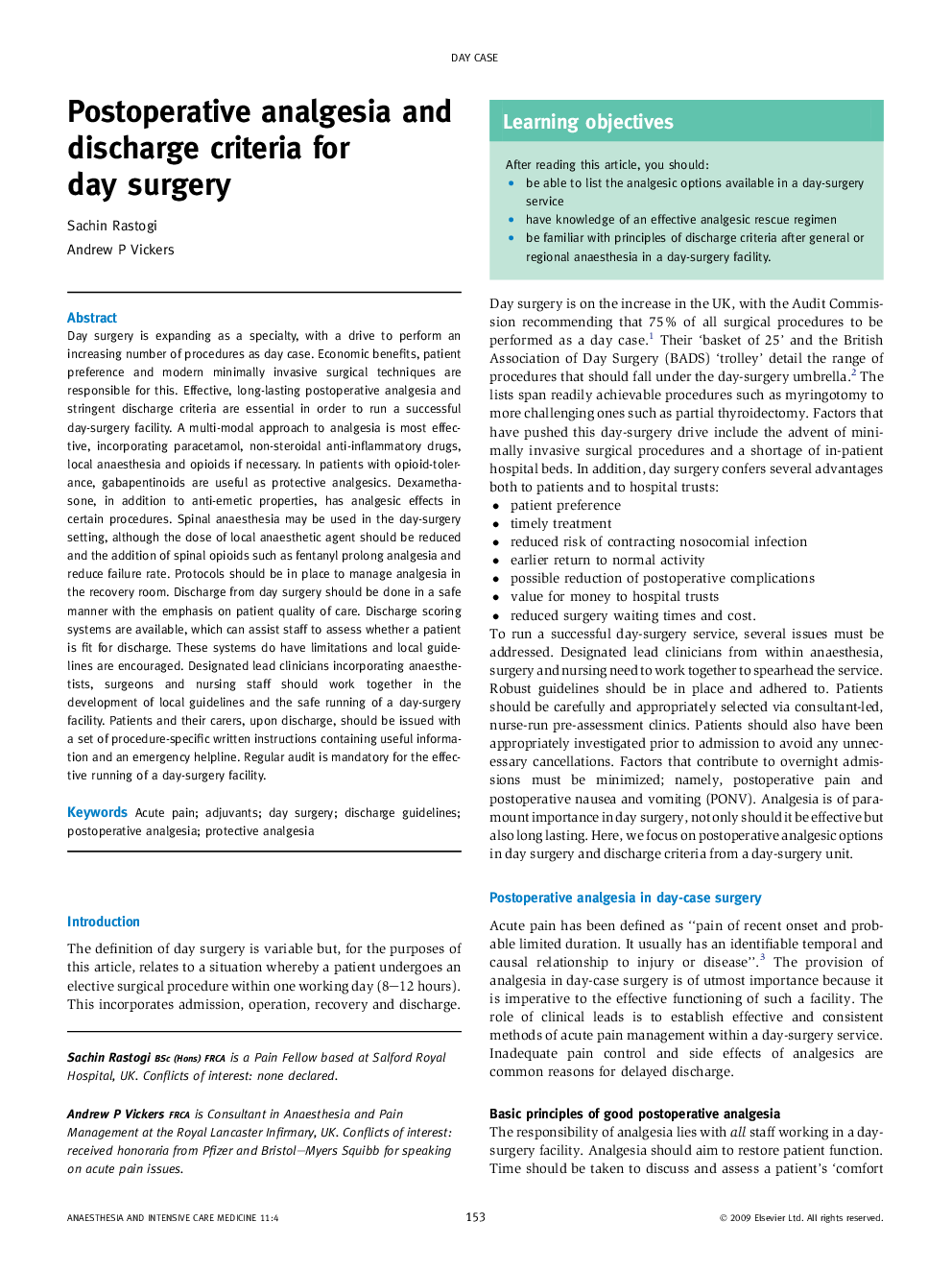| Article ID | Journal | Published Year | Pages | File Type |
|---|---|---|---|---|
| 2743232 | Anaesthesia & Intensive Care Medicine | 2010 | 4 Pages |
Day surgery is expanding as a specialty, with a drive to perform an increasing number of procedures as day case. Economic benefits, patient preference and modern minimally invasive surgical techniques are responsible for this. Effective, long-lasting postoperative analgesia and stringent discharge criteria are essential in order to run a successful day-surgery facility. A multi-modal approach to analgesia is most effective, incorporating paracetamol, non-steroidal anti-inflammatory drugs, local anaesthesia and opioids if necessary. In patients with opioid-tolerance, gabapentinoids are useful as protective analgesics. Dexamethasone, in addition to anti-emetic properties, has analgesic effects in certain procedures. Spinal anaesthesia may be used in the day-surgery setting, although the dose of local anaesthetic agent should be reduced and the addition of spinal opioids such as fentanyl prolong analgesia and reduce failure rate. Protocols should be in place to manage analgesia in the recovery room. Discharge from day surgery should be done in a safe manner with the emphasis on patient quality of care. Discharge scoring systems are available, which can assist staff to assess whether a patient is fit for discharge. These systems do have limitations and local guidelines are encouraged. Designated lead clinicians incorporating anaesthetists, surgeons and nursing staff should work together in the development of local guidelines and the safe running of a day-surgery facility. Patients and their carers, upon discharge, should be issued with a set of procedure-specific written instructions containing useful information and an emergency helpline. Regular audit is mandatory for the effective running of a day-surgery facility.
